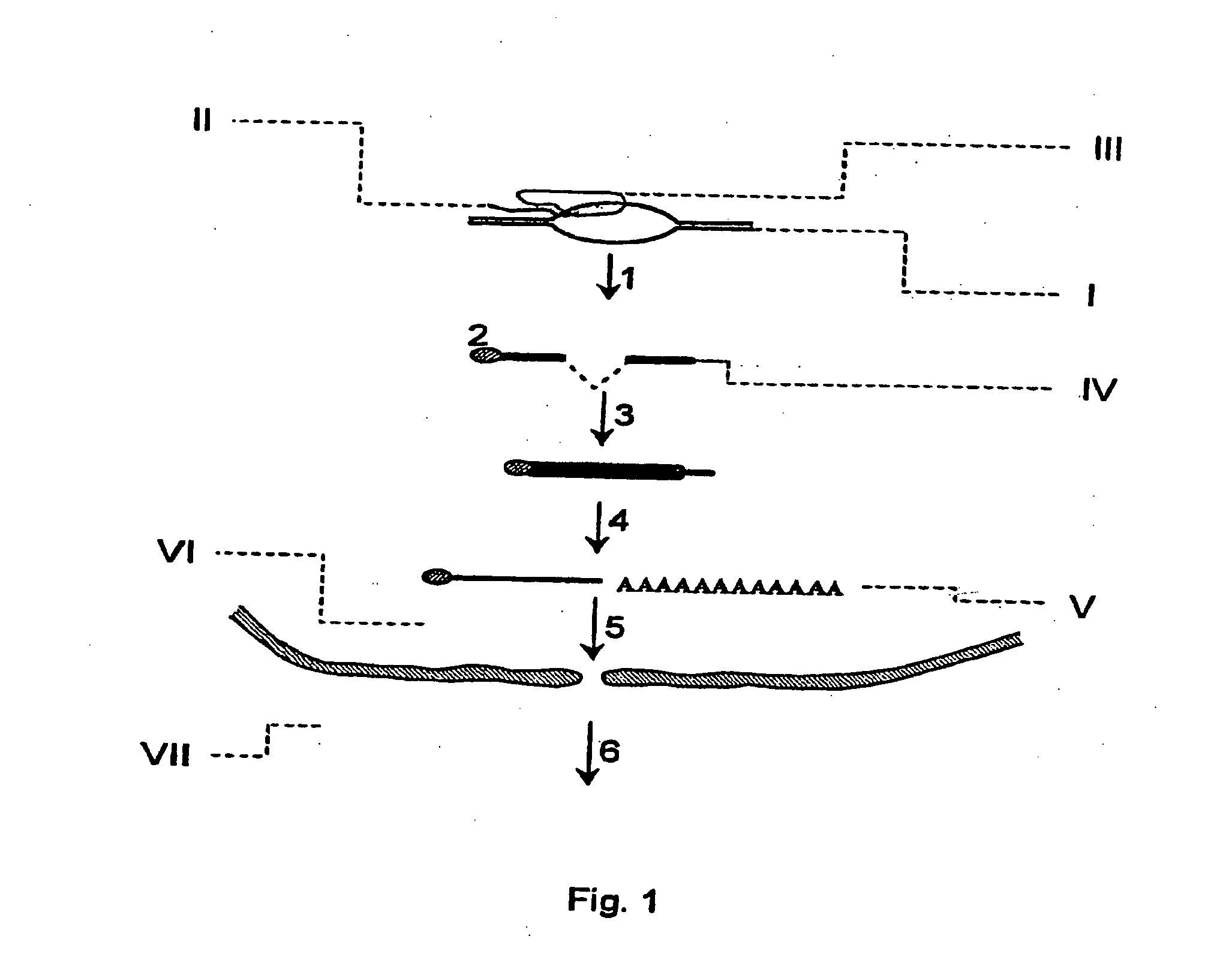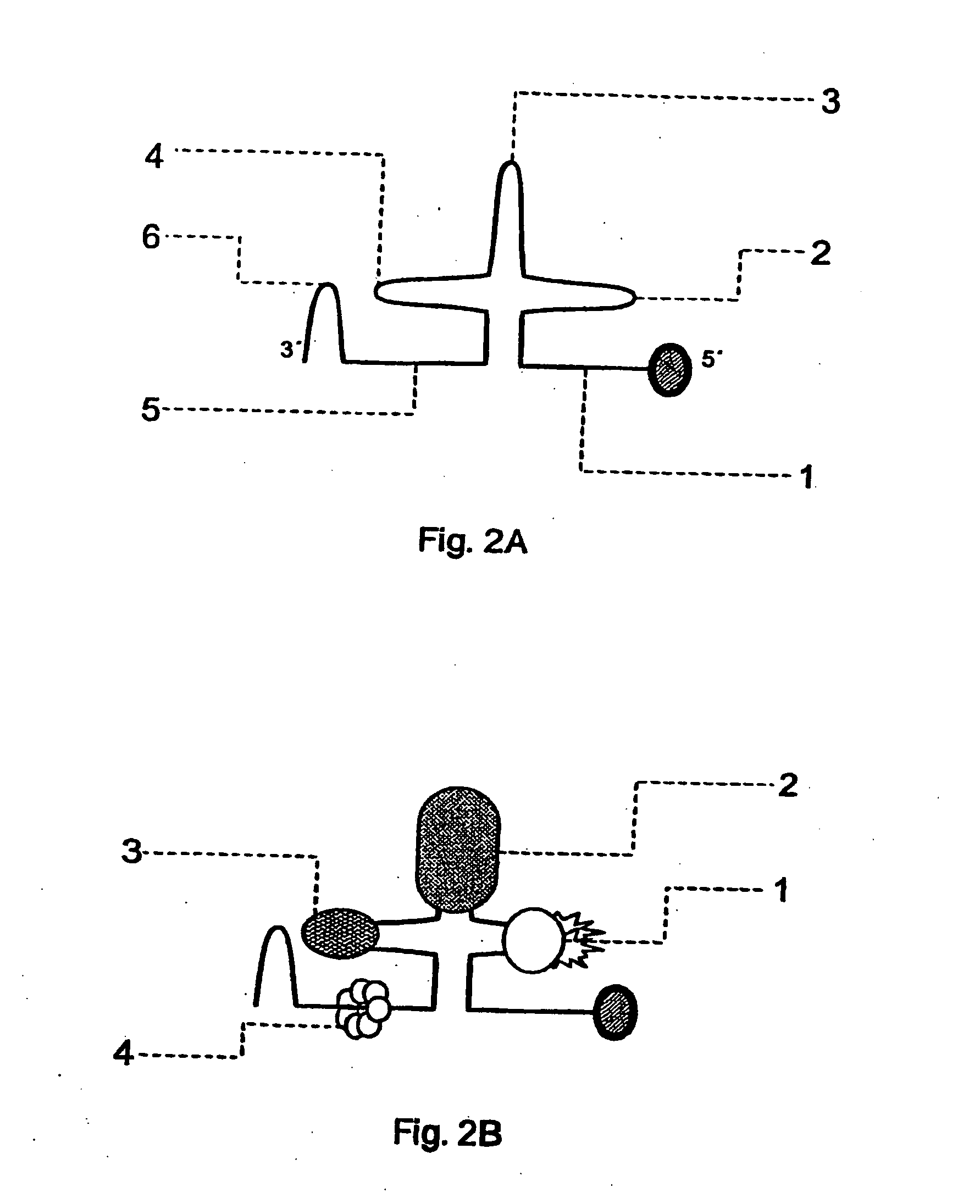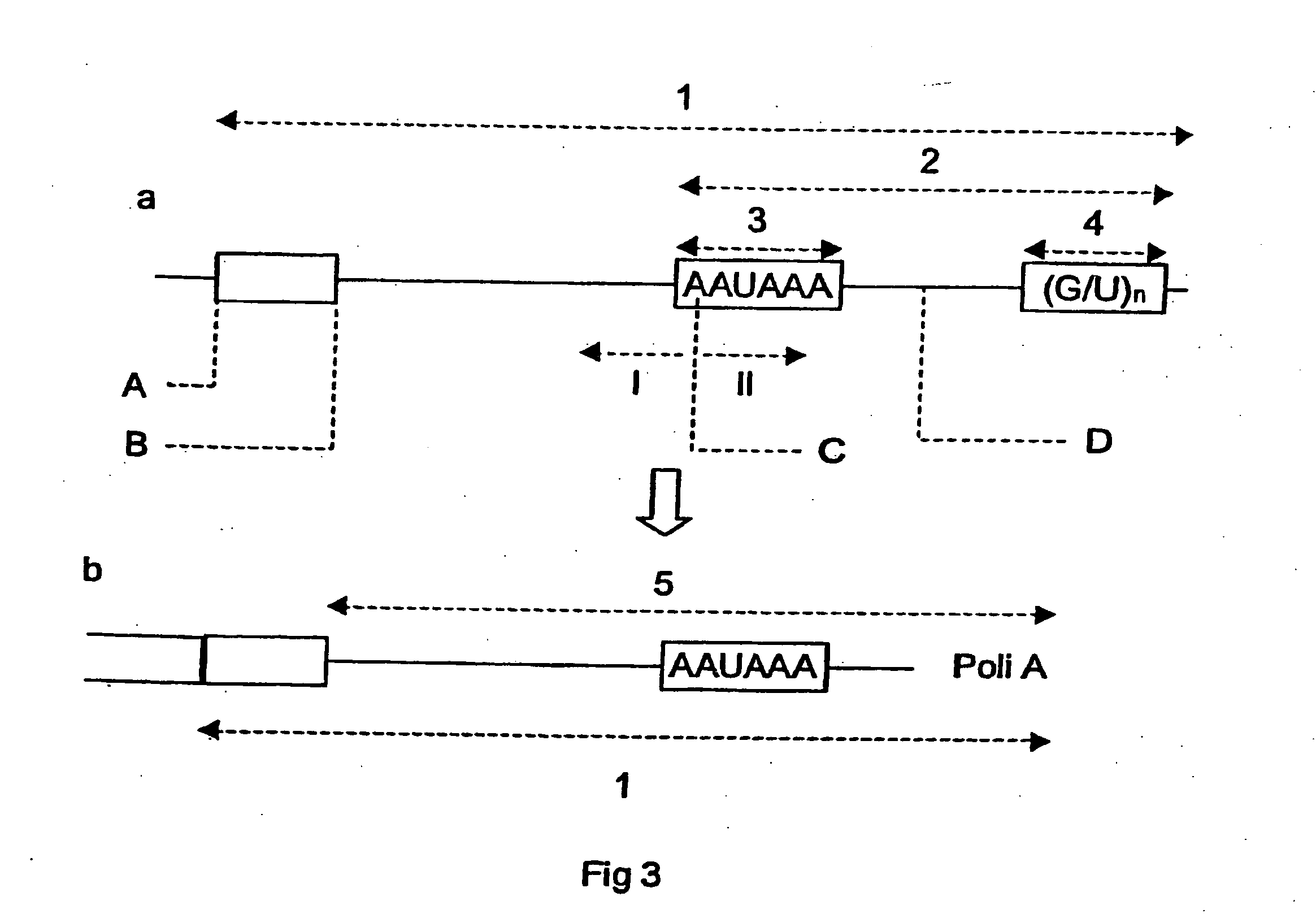Method of reversible inhibition of gene expression by means of modified ribonucleoproteins
a technology of ribonucleoprotein and ribonucleoprotein, which is applied in the field of reversible inhibition of gene expression by means of modified ribonucleoprotein, can solve the problems that the systems used most, based on antisense technology (antisense ribozymes and oligos), have not had much success
- Summary
- Abstract
- Description
- Claims
- Application Information
AI Technical Summary
Problems solved by technology
Method used
Image
Examples
example 1
Introduction of the Sequences Recognizable by U1 snRNP in the 3' Region of the Reporter Genes
[0064] The 5' end of the wild-type U1 snRNP interacts by base-pairing with the 5' sequences of the intron of the immature messenger RNAs (mRNAs) in the cell nucleus. This is the first step for elimination of the introns and maturation of the mRNAs. The sequences of U1 snRNA that can interact are the nucleotides from 1 to 10, complementary to the 5' sequences of the intron. If the 5' end of U1 snRNA is altered so that it is complementary to sequences of the 3' terminal exon of a messenger whose expression we are interested in inhibiting, the modified U1 snRNA will interact, also by base-pairing, with the complementary sequences of the 3' terminal exon of the target RNA. These interactions occur in the cell nucleus, very probably at the same time as transcription takes place.
[0065] In order to include the binding site to U1 snRNA, or the mutant site used as control, at the -145 position of the...
example 2
Construction of Modified U1 snRNA
[0082] To construct the plasmid of U1 snRNA with mutations (pGem3z+:U1-Mut; SEQ ID NO: 2), in all cases we started from the plasmid pGem3z+:U1-Mscl (SEQ ID NO: 1) digested with BglI and BclI and the hybridized and kinase-treated oligos shown below were included between these sequences:
[0083] SEQ ID NO: 15
[0084] SEQ ID NO: 16
[0085] The positive clones were verified by sequencing.
[0086] Cotransfection of HeLa Cells with Modified U1 snRNA
[0087] In the protocol for transfection of HeLa cells described previously (Example 1), the maximum quantity of DNA that can be transfected without altering the result of the transfection has been established. The result shows that it must not exceed 20 micrograms of DNA in the mixture described. On this basis the experiments were performed by cotransfecting increasing amounts of the plasmid of U1 snRNA while keeping the amount of plasmid of renilla and of luciferase constant. So that all the results would be comparable...
example 3
Inhibition of mRNAs Using Modified U1 snRNPs for Therapeutic Purposes Using the Hepatitis B Virus as a Model
[0088] The hepatitis B virus has a genome in the form of circular DNA. Transcription of the viral genes starts from separate sites of the genome but they all have the same polyadenylation sequences, so that action directed against this region should lead to inhibition of expression of all the viral mRNAs. Therefore we constructed four modified U1 s of nucleotides 1 to 14 of its 5' end. We replaced these sequences with sequences that hybridize to 36, 72, 89 and 127 nucleotides upstream of the polyadenylation site. We thus obtain UHB35 (SEQ ID NO: 17), UHB72 (SEQ ID NO: 18), UHB89 (SEQ ID NO: 19) and UHB127 (SEQ ID NO: 20). It was found that these sequences are identical in the majority of strains of human hepatitis B. A cryptic polyadenylation site has also been described in this virus. The polyadenylation site of HBV that is generally used is at position 1918 of pHBV, its sequ...
PUM
| Property | Measurement | Unit |
|---|---|---|
| diameter | aaaaa | aaaaa |
| volume | aaaaa | aaaaa |
| volume | aaaaa | aaaaa |
Abstract
Description
Claims
Application Information
 Login to View More
Login to View More - R&D
- Intellectual Property
- Life Sciences
- Materials
- Tech Scout
- Unparalleled Data Quality
- Higher Quality Content
- 60% Fewer Hallucinations
Browse by: Latest US Patents, China's latest patents, Technical Efficacy Thesaurus, Application Domain, Technology Topic, Popular Technical Reports.
© 2025 PatSnap. All rights reserved.Legal|Privacy policy|Modern Slavery Act Transparency Statement|Sitemap|About US| Contact US: help@patsnap.com



